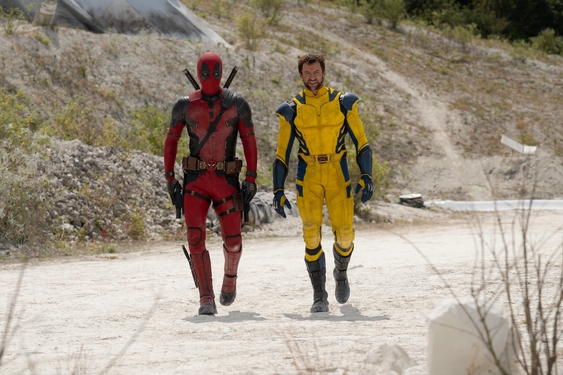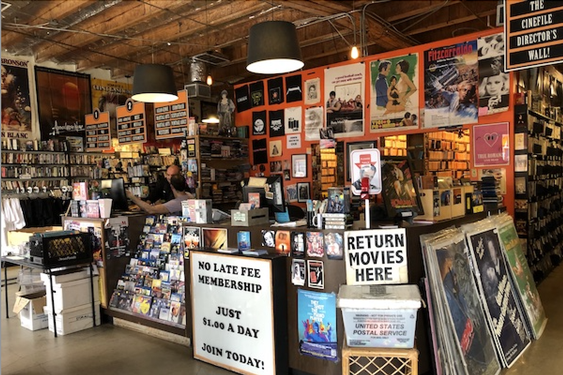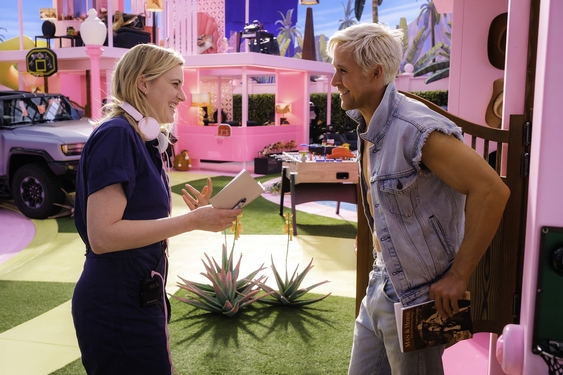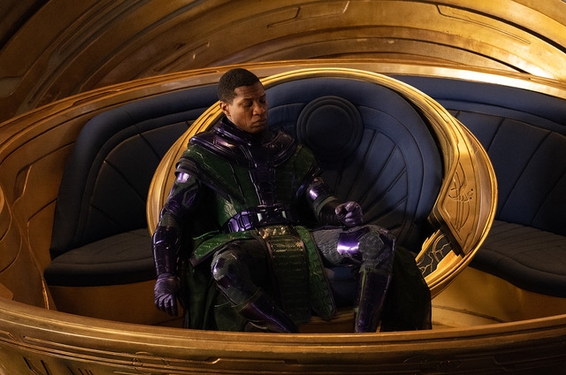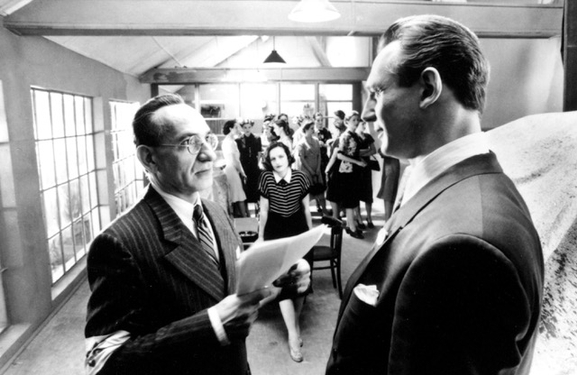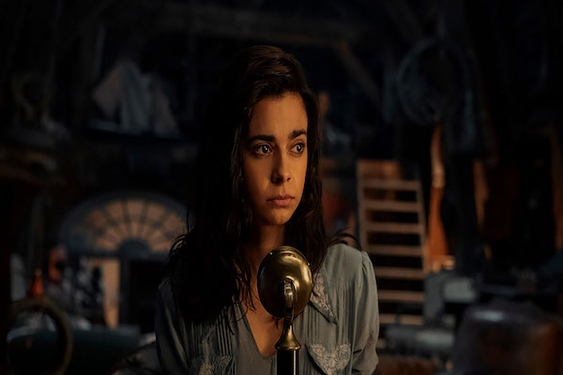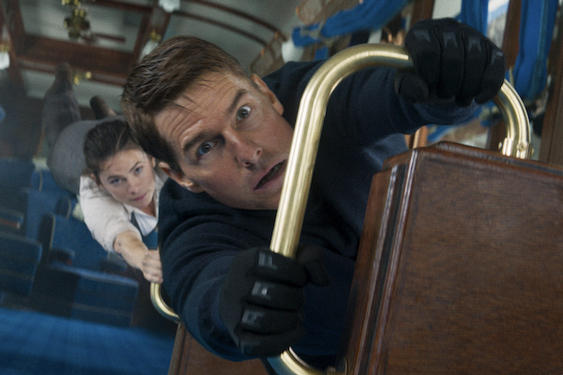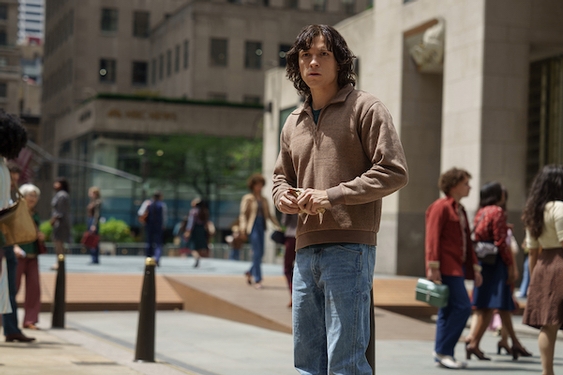
Road trip movies – a dime a dozen. A road trip movie with Melissa McCarthy – been there (see Identity Thief). A road trip with Susan Sarandon – done that (see Thelma and Louise). From the 1934 Best Picture winner It Happened One Night, to the 1969 counterculture classic, Easy Rider, to 1983’s comedy classic National Lampoon’s Vacation, the road trip genre is as ingrained in the movie-making lexicon as romantic comedies, horror and action.
The next road trip movie on the itinerary is Tammy. After losing her job, husband and car in one day, Tammy Banks (McCarthy) wants out of her small-town existence. With no money or transportation, her only way out is with her hard-partying grandmother, Pearl (Sarandon). Their misadventures and brushes with the law lead them on a road trip to remember.
McCarthy, who also co-wrote the screenplay, explained, “Ben [Falcone, her husband and Tammy director] and I had always talked about writing a movie about real people who mess up and have to decide if they are going to keep making mistakes or change things…If you’re having a terrible day and something ridiculous makes you laugh, that’s the best. We wanted to capture that feeling.”
Although the plot might, at first glance, lack originality, the casting does not. Not only do the lead actresses deliver a solid performance, but their roles also indicate Hollywood might be taking a step in the right direction by going against the “norm” when it comes to casting women in blockbuster films.
First, you have McCarthy. Since her Oscar nomination for Bridesmaids and Emmy win for “Mike and Molly,” she has been in high demand as one of the top go-to comedic actresses. In fact, you can find similarities in McCarthy and Jennifer Aniston, who took the same road to a successful comedy film career by parlaying her Emmy-winning role on “Friends” into multiple comedic parts in movies such as We’re the Millers and Horrible Bosses.
However, while both women are arguably two of the most in-demand comedic actresses right now, that’s where most similarities end. Much, and probably too much, has been written in the blogosphere about McCarthy not exactly being a size two. You see, Aniston fits the mold of what Hollywood execs think a woman “should” look like, but McCarthy, who is around the same age as Aniston, doesn’t fit that mold—yet, she has nabbed a lead role.
Thanks to Tammy and her stardom, McCarthy could potentially steer the film world in the right direction, where female leads are more representative of women today. If you take Los Angeles and maybe a few other cities out of the equation, McCarthy represents more accurately how the average American woman looks compared to comediennes such as Aniston or Cameron Diaz. And good for McCarthy—she proves you don’t have to starve yourself to be funny.
And then you have McCarthy’s co-pilot on this road trip, Sarandon, who represents another demographic we don’t see enough of in major comedic lead roles. Sarandon has been a star for decades, but she’s on the wrong side of 50—she’s 67, to be exact. While Hollywood has allowed men to be romantic leads and action heroes well past AARP qualification (see Arnold Schwarzenegger in The Last Stand or Pierce Brosnan in Love is All You Need), women who reach a certain age are relegated to minor roles as the hapless wife or mother.
To Sarandon’s credit, she was eager to play the grandmother—albeit, a slightly twisted grandmother—role.
“The script had such energy and was flamboyant in its freedom,” she said. “I liked that all the absurd things they go through give Pearl and Tammy the opportunity to look at where they are in their lives and take it up a notch…Pearl is smart but she’s wild, definitely a product of the sex, drugs and rock ‘n’ roll generation.”
“Susan is just cool,” added McCarthy. “She came in with no judgment of Pearl and her wild past. She said, ‘It is what it is,’ and I think that approach is what makes Pearl so interesting, vibrant and sexy.”
Interesting, vibrant and sexy. Those adjectives have described Sarandon throughout her career, but is there an unwritten rule somewhere that states actresses can’t be those things after a certain age and land lead roles? If we look at past statistics, we can’t help but think that Hollywood does indeed feel that way.
In a 2011 study focused on films released in 2009, USC’s Annenberg School for Communication and Journalism revealed a gender-age gap problem. “The gender disparity was lower for characters in the 21-39 range, with females making up 36.9 percent of speaking roles,” stated the study, “but in the 40-64 age group, only 24 percent were female.” In other words, more than half of female characters were depicted as being between 21 and 39 years of age, while just 22.2 percent of them were in the 40-64 range.
As for the men, almost 49 percent of male characters were 21-39, while about 35 percent were 40-64.
However, there are always exceptions to every rule. Meryl Streep is still one of the most popular actresses working today, and Sigourney Weaver will be continuing her successful decades-long collaboration with James Cameron in the Avatar sequels. “American Horror Story’s” Ryan Murphy upped the ante this past season by giving some of the meatiest roles of their careers to Jessica Lange, Angela Bassett, Frances Conroy and Kathy Bates (Bates also has a supporting role in Tammy). These actresses have shown that women past their thirties can be sexy and/or funny and/or scary and/or just plain riveting to watch.
But still, compared to men, women in general have not quite yet earned “equal rights” in film—Hollywood just hasn’t quite gotten the memo yet.
In the "It’s a Man's (Celluloid) World" survey from San Diego State University, it was revealed that women accounted for only “15 percent of protagonists, 29 percent of major characters and 30 percent of speaking characters in the top 100 (domestic) grossing films of 2013.”
Furthermore, the study showed that “only 13 percent of the top 100 films featured equal numbers of female and male characters. Those that were cast were younger than their male counterparts and less likely than males to have clear goals or be portrayed as leaders.”
However, Cameron is one of the directors who did get the memo, apparently. Weaver in Aliens and Linda Hamilton in Terminator 2: Judgment Day are two of the most badass depictions of women on screen, and in an interview with Fangoria in '86, Cameron explained why.
“I tend to like strong female characters. It just interests me dramatically,” he said. “A strong male character isn't interesting, because it has been done, and it's so clichéd…A strong female character is still interesting to me, because it hasn't been done all that much, finding the balance of femininity and strength.”
And so, with Tammy, we have to acknowledge and praise Falcone and the rest of the creators for their casting choices, as well as McCarthy and Sarandon for taking the roles. Thanks to them, moviegoers will be able to see a different kind of Hollywood, a Hollywood where a woman’s physical appearance doesn’t make her any less (or more) funny, where age is just a number and women are just as (or more) capable as men at shining bright in major films' lead roles.
If you watch Tammy, you might not analyze it as much as I did, and that’s fine. It’s summer, and to kinda, sorta paraphrase McCarthy, be happy and forget the b-s.
Tammy is currently playing in theaters.
Enter to win a FREE Tammy prize pack by clicking here!



